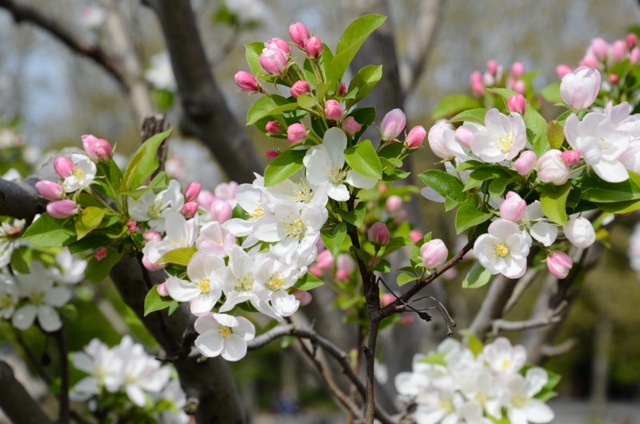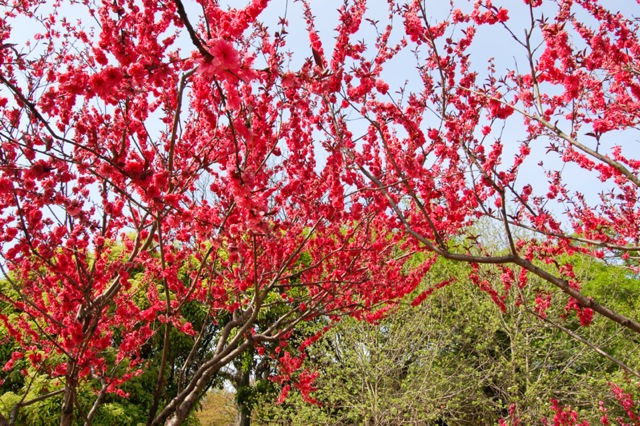There are many wonderful things about being an expat. The chance to live in another country and experience a different culture. The traveling. The food. Oh my god, THE FOOD.
So what isn't so great about being an expat? The goodbyes.
You see, many of us sign on as expats for just a few years. Contracts vary but the vast majority of expats spend two to five years in one place. Sure, there are a few people who are here longer, but many of us simply come for a quick and rather intense tour. Which means that people are constantly leaving and we are repeatedly being forced to say goodbye.
In the next few weeks, I am going to say goodbye to at least 15 people who have been my friends, my support, and my family over the last two and a half years. We've said farewell to others during this time, but this summer's exodus seems to sting the most. Part of it is the sheer number of people leaving. But it's also who is leaving this time around.
There's J, who was my first friend in Shanghai. We moved here within weeks of each other and together, we found the strength to step outside our comfort zones and explore the city. Her family became mine, her daughter like another niece to me. I'm having trouble imagining what Shanghai will be like without them.
L and A, a British couple who not only taught me some bloody good slang, but gifted me with a secret family recipe for Yorkshire Pudding. My thighs will never be the same.
The G family, whose adorable kids make me want to have my own while simultaneously explaining the necessity for a large wine collection.
And then there is L and R, friends who reached out to us through this blog, and who it felt like we had known for years. Their love of good food, stiff drinks, and Ghirardelli brownies made them some of our favorite dining companions.
We've all promised to visit, to keep in touch via Skype and email. And I hope we do. But life is busy and things will change. I know that. Yet I'll forever be bonded to these people. Years from now, I'm sure I will remember the way the Bund looked at night and the taste of xiaolongbao. But the clearest memories even now are the Sunday night dinners spent with friends, the glasses of wine we shared, and the constant laughter that has dominated my life here.
So goodbye my friends. Safe travels to your new homes and best of luck on your next adventures. But most of all, thank you for the memories.
Friday, May 30, 2014
Monday, May 19, 2014
Shanghai Botanical Gardens
Matthew and I first became acquainted with the Shanghai Botanical Garden during our training for the half marathon. It was a great place to run a few miles without having to worry about getting hit by a car. Plus the scenery is nice.
On a beautiful Spring day in April, we decided to visit the gardens once again to catch the cherry blossoms. This time, instead of lacing up our running shoes, we packed a picnic lunch and biked ourselves down to the gardens.
Mobs of other people apparently had the same idea.
Thankfully, the Botanical Garden is massive, covering over 240 acres of land (and holding over 5,000 species of plants) which meant we didn't have to search too hard to find a spot to sit down for our picnic lunch.
Like most parks in China, early mornings are the best time to witness tai chi partitioners, drummers, and community choir performances. You'll also find countless individuals on roller blades as well as the occasional juggler. We once even saw a juggler on rollerblades. Rebel.
The admission fee is 15 rmb to the Garden and 30 to the Conservatory. Or you can get a combined ticket for 40. We've never actually gone into any of the exhibits, but instead prefer to people watch outside.
The Botanical Gardens are located at 1111 Longwu Road, about a 15 minutes walk from the Shanghai South Railway Station Metro station.
On a beautiful Spring day in April, we decided to visit the gardens once again to catch the cherry blossoms. This time, instead of lacing up our running shoes, we packed a picnic lunch and biked ourselves down to the gardens.
Mobs of other people apparently had the same idea.
Thankfully, the Botanical Garden is massive, covering over 240 acres of land (and holding over 5,000 species of plants) which meant we didn't have to search too hard to find a spot to sit down for our picnic lunch.
Like most parks in China, early mornings are the best time to witness tai chi partitioners, drummers, and community choir performances. You'll also find countless individuals on roller blades as well as the occasional juggler. We once even saw a juggler on rollerblades. Rebel.
The admission fee is 15 rmb to the Garden and 30 to the Conservatory. Or you can get a combined ticket for 40. We've never actually gone into any of the exhibits, but instead prefer to people watch outside.
The Botanical Gardens are located at 1111 Longwu Road, about a 15 minutes walk from the Shanghai South Railway Station Metro station.
Thursday, May 15, 2014
Lantern Festival
The Lantern Festival is a festival celebrated on the fifteenth day of the lunar calendar, marking the last day of the Chinese New Year celebrations. (Yes this was back in February, I'm super behind on posts).
The day's main activity is watching lanterns. Throughout the Han Dynasty, Buddhism flourished in China. The legend goes that an emperor heard how Buddhist monks would watch sarira, or the remains from the cremation of Buddha's body, and light lanterns to worship Buddha on the 15th day of the first lunar month. The emperor ordered lanterns to be lit in the imperial palace and temples to show respect to Buddha on this day. Later, the Buddhist rite developed into a grand festival and expanded to the whole of China.
During the Lantern Festival, lanterns of various shapes and sizes are displayed in the streets, parks and temples. Children will hold self-made or bought lanterns and solve riddles on the lanterns. In ancient times, the lanterns were fairly simple, and only the emperor and noblemen had large ornate ones. In modern times, lanterns have been embellished with many complex designs. For example, lanterns are now often made in the shape of animals or are red to symbolize good fortune.
Matthew and I decided to partake in the Lantern Festival near our apartment in Xujiahui Park. The park was crowded with people looking at the large lantern displays, as well as children carrying their personal lanterns.
The day's main activity is watching lanterns. Throughout the Han Dynasty, Buddhism flourished in China. The legend goes that an emperor heard how Buddhist monks would watch sarira, or the remains from the cremation of Buddha's body, and light lanterns to worship Buddha on the 15th day of the first lunar month. The emperor ordered lanterns to be lit in the imperial palace and temples to show respect to Buddha on this day. Later, the Buddhist rite developed into a grand festival and expanded to the whole of China.
During the Lantern Festival, lanterns of various shapes and sizes are displayed in the streets, parks and temples. Children will hold self-made or bought lanterns and solve riddles on the lanterns. In ancient times, the lanterns were fairly simple, and only the emperor and noblemen had large ornate ones. In modern times, lanterns have been embellished with many complex designs. For example, lanterns are now often made in the shape of animals or are red to symbolize good fortune.
Matthew and I decided to partake in the Lantern Festival near our apartment in Xujiahui Park. The park was crowded with people looking at the large lantern displays, as well as children carrying their personal lanterns.
After wandering through the crowds, we made our way back to the apartment for a bowl of tāng yuán, small dumpling balls made of glutinous rice flour filled with rose petals, sesame, bean paste, jujube paste, walnuts, dried fruit, or sugar. Tāng yuán in Chinese has a similar pronunciation with tuán yuán, meaning reunion. So people eat them to denote union, harmony and happiness for the family for the next year.
Or you just eat them because they taste good.
Monday, May 5, 2014
Day Trip: Nanxiang Town
Thursday was Labor Day in China, meaning that we were all
granted with a few days off work. Despite the fear of crowds, we decided to venture
out of downtown to Nanxiang Town in the northern Jiading District of
Shanghai. Nanxiang is a sleepy suburb that boasts attractions such as Guyi
Gardens, Nanxiang Twin Towers, Ancient Town and Yunxiang Temple.
We came for none of these. We hadn’t gone to Nanxiang to sightsee, we were there to eat. Why? Because Nanxiang happens to be the birthplace of xiăolóngbāo.
We came for none of these. We hadn’t gone to Nanxiang to sightsee, we were there to eat. Why? Because Nanxiang happens to be the birthplace of xiăolóngbāo.
I’ve talked about my love of these dumplings before and even
suggested a few spots to try them in Shanghai. But eating xlb from the source
seemed like the perfect way to spend an afternoon.
Reaching Nanxiang is easy. Simply take line 11 to the
Nanxiang stop. Once there, take exit 1 and walk south along Huyi Gong Lu for
1.5 km (~10 minutes) to Guyi Garden. A short distance after that, you’ll
encounter Guyiyuan Lu, which is where our culinary adventure began.
I’m not joking when I say there are hundreds of xlb
restaurants in Nanxiang. Hundreds. For the purpose of research, we ate at three
restaurants. I’m clearly conducting a very scientific experiment.
Our first stop was the shop on the corner. Overly thin skins
combined with overcooked dumplings meant that our xlb stuck to the steamer and
ripped when picked up. Would not recommend.
The second spot was the famous Gulong Restaurant (220
Guyiyuan Lu). While Nanxiang town may be the birthplace of xlb, Gulong is
apparently the actual spot of creation. The dumplings here were beautifully
prepared. The dough was slightly thicker and the flavor was sweet and savory. These were
voted the best by our panel. FYI, the panel consisted of me, Matthew, and our
friend C.
Our third stop was slightly further down Guyiyuan though I failed to notice the name. This restaurant offered numerous types of xlb and we opted for original pork as well as the crab variety. The crab version was a big hit and I quite liked the pork as well. These xlb received slightly less enthusiastic praise than the ones at Gulong, but we were also rather stuffed at this point. I think we had ordered and consumed close to 60 dumplings at this point.
I can feel you judging me.
Since we only sampled from a few restaurants, I have a
feeling I will visit Nanxiang again. All in the name of research of course.
Subscribe to:
Comments (Atom)




















